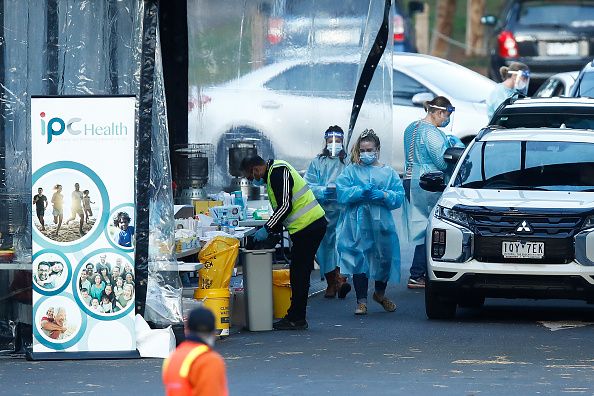- The total number of deaths across the globe from COVID-19 has topped 700,000, with more than 18 million cases recorded worldwide
- The U.S. still leads the pack with the most number of infections – 4.8 million – with Brazil in second place with 2.8 million cases
- In Australia, around 20,000 COVID-19 cases have been recorded since the pandemic began
- Victoria continues to be the worst-affected state, with another 471 new cases and eight deaths recorded in the last 24 hours
- The State Coroner in Victoria has announced it will examine a number of deaths at aged-care homes in Melbourne
- While the Prime Minister has revealed Victoria’s new lockdowns are expected to cost the wider economy more than $7 billion
The global death toll from the coronavirus has surpassed 700,000, with more than 18 million cases recorded across the world.
The U.S. remains the worst affected nation to date, with more than 4.8 million cases of COVID-19 recorded in the states and 170,000 deaths.
Brazil has the second-highest number of cases, with 2.8 million people contracting the virus.
India, Russia and South Africa round out the top-five countries with the most COVID-19 cases.
In comparison in Australia, almost 20,000 cases have been recorded since the pandemic began.
The majority of those cases are centred in Victoria, where some of the world’s strictest lockdowns have been introduced to stop the spread of the deadly virus.
Another 471 cases were recorded in the state today, down on yesterday’s record high of 725 new cases recorded in a 24 hour period.
Sadly, the death toll has risen once again in Victoria, with an additional eight people passing away after contracting the virus.
This includes two men in their 60s, three men and two women in their 80s, and one woman in her 90s.
Four of the eight deceased were linked to aged care facilities across Melbourne, indicative of how the entire sector has badly hit by Melbourne’s second wave of coronavirus infections.
The Victorian State Coroner has announced it will investigate five deaths linked to one particular aged care centre in Melbourne, with police preparing a brief of evidence.
20 residents from St Basil’s Homes for the Aged in Fawkner have died after contracting coronavirus, while 159 COVID-19 cases are linked the centre.
Meantime, the expected cost of Melbourne’s return to harsh stage-four lockdown restrictions has been revealed.
The Prime Minister believes between $7 billion to $9 billion will be wiped from Australia’s GDP in the September quarter, smashing previous estimates of $3.3 billion.
“The additional restrictions in Victoria in August and September is estimated to reduce the size of the real economy, real GDP in the September quarter by between $7 billion and $9 billion,” Scott Morrison said.
“The combined effect of GDP – on GDP of the stage 3 and 4 Victorian restrictions throughout the September quarter is expected to be in the order of $10 billion to $12 billion detracting some 2.5 per cent from quarterly real GDP growth,” Morrison said.








